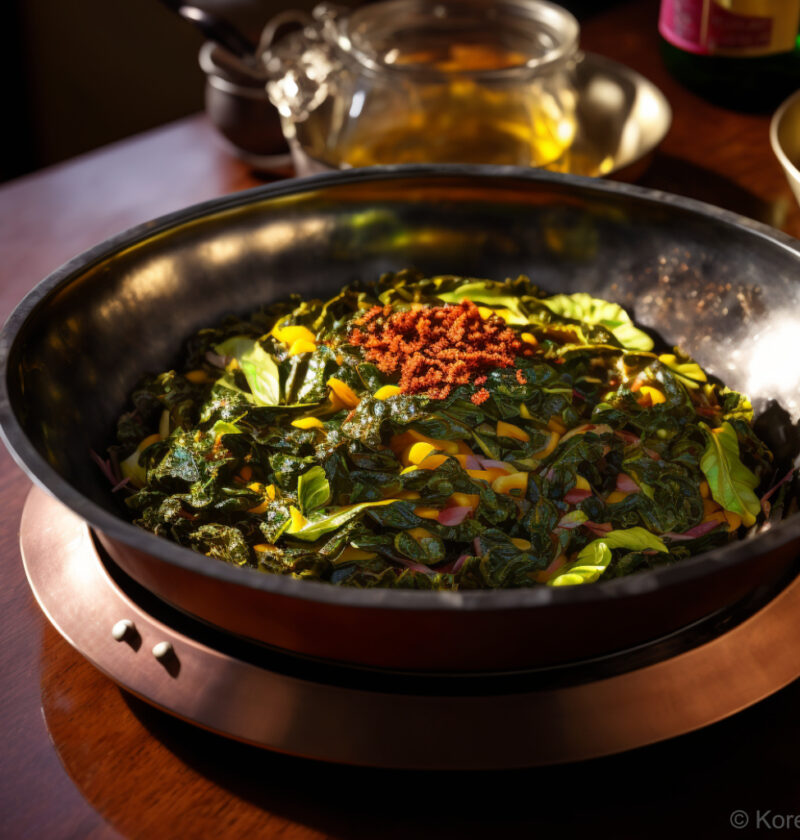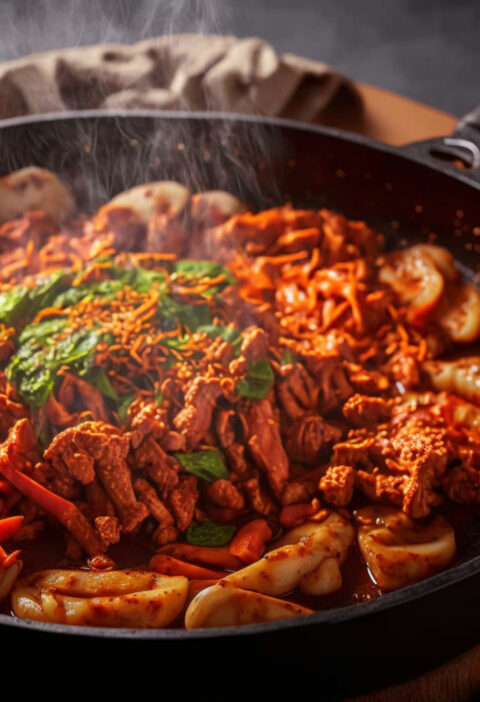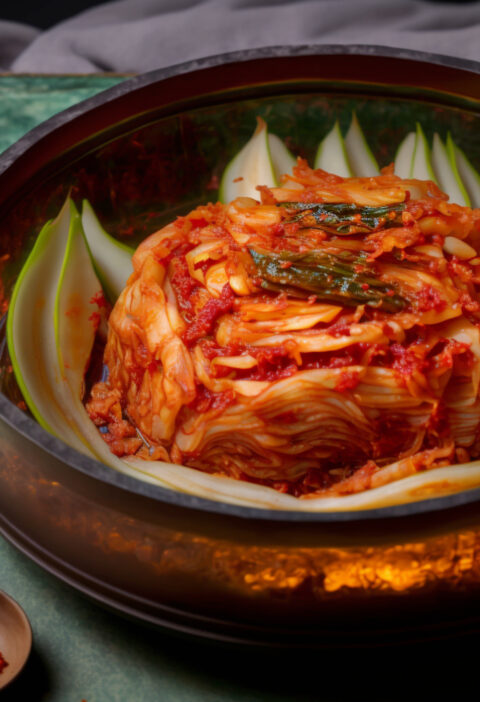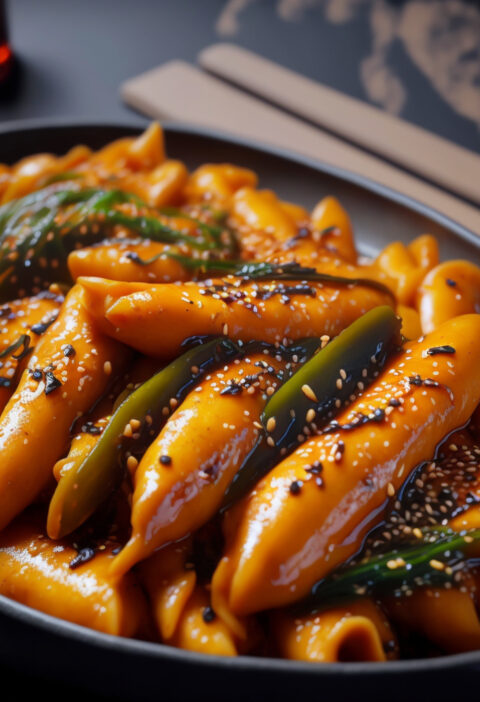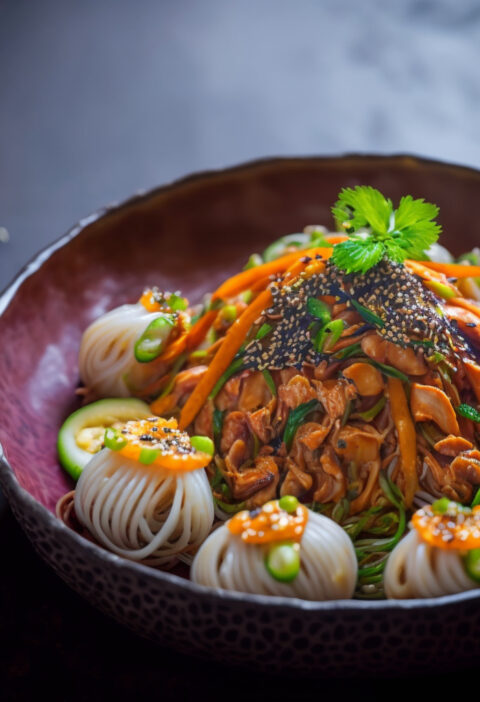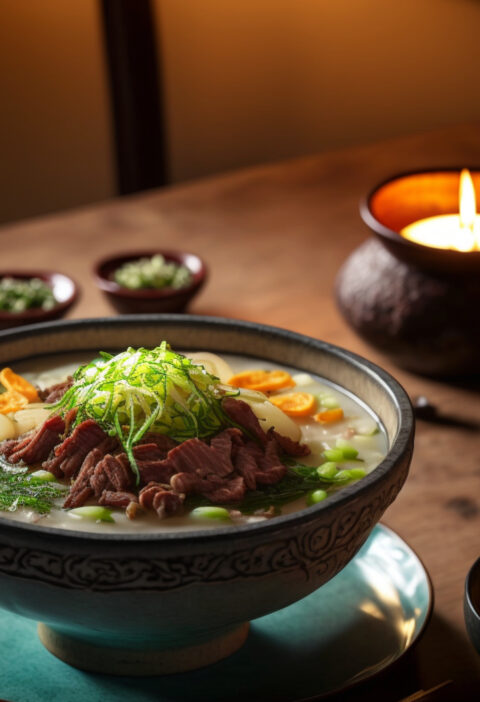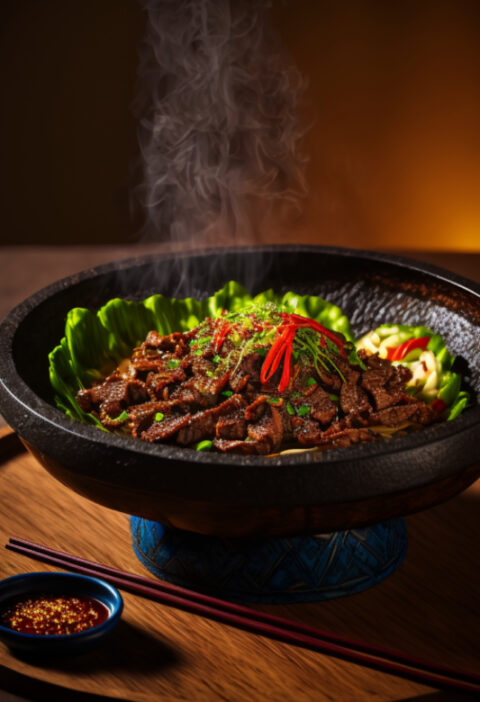What is Doenjang-Bokkeum (Fermented Soy Bean Paste Stir-Fry)?
Doenjang-bokkeum, also known as fermented soybean paste stir-fry, is a Korean dish made with doenjang (fermented soybean paste), vegetables, and a protein such as beef, seafood, or tofu. The ingredients are stir-fried together in a pan or wok to create a flavorful and satisfying dish.
Doenjang-bokkeum is a staple of Korean cuisine and is typically a main course or a shared dish among a group. It is a delicious and filling meal, with rich and complex flavors. Similar to Doenjang-Jjigae, it’s also good for your health as the fermented soybean paste is rich in probiotics.
Doenjang-bokkeum is served with a bowl of rice with banchan and is often paired with condiments such as kimchi and ssamjang (a spicy dipping sauce). It is a delicious and satisfying choice for those looking to enjoy a flavorful and satisfying Korean meal.
How To Make Doenjang-Bokkeum
Ingredients
- 1/2 lb tofu, cut into 1-inch cubes
- 1 cup diced vegetables (such as bell peppers, onions, or zucchini)
- 2 tablespoons doenjang (fermented soybean paste)
- 1 tablespoon sugar
- 1 tablespoon sesame oil
- 1 tablespoon water
- 1 clove garlic, minced
- 1/2 teaspoon black pepper
- 1 green onion, thinly sliced, for serving Sesame seeds, for serving (optional)
Instructions
- Heat a large nonstick pan or wok over medium-high heat. Add the tofu and cook for 2-3 minutes, or until it is golden brown and crispy.
- Add the vegetables to the pan and cook for an additional 2-3 minutes, or until they are tender.
- In a small mixing bowl, whisk together the doenjang, sugar, sesame oil, water, garlic, and black pepper. Pour the mixture over the tofu and vegetables in the pan and stir until the vegetables are evenly coated with the sauce.
- Reduce the heat to medium-low and simmer the doenjang-bokkeum for an additional 5-10 minutes, or until the flavors have melded together and the vegetables are tender.
- Serve the doenjang-bokkeum hot, garnished with green onions and sesame seeds, if desired. It’s typically served with a side of rice and other side dishes, such as kimchi or pickled vegetables.
Extra Credit Options
Like many other dishes, Doenjang-bokkeum is a highly customizable meal. Here are few commonly used tips to help modify the dish as you see fit.
- If you prefer a sweeter doenjang-bokkeum, you can add additional sugar to the sauce.
- If you don’t have doenjang on hand, you can substitute it with miso paste or gochujang (red chili paste).
- If you’re short on time, you can use pre-cut vegetables or frozen vegetables to save on prep time.
- If you’re not a fan of the vegetables listed in the recipe, you can use any vegetables you have on hand. Some good options include broccoli, bok choy, or spinach.
- If you’re not a fan of tofu, you can use any protein you have on hand. Some good options include eggs, shrimp, or pork.
- If you’re vegetarian or vegan, you can omit the protein and use extra vegetables instead. Tofu, shiitake mushrooms, and bean sprouts are all good options.
- If you’re not a fan of green onions, you can omit them or use a different herb such as cilantro or parsley instead.

